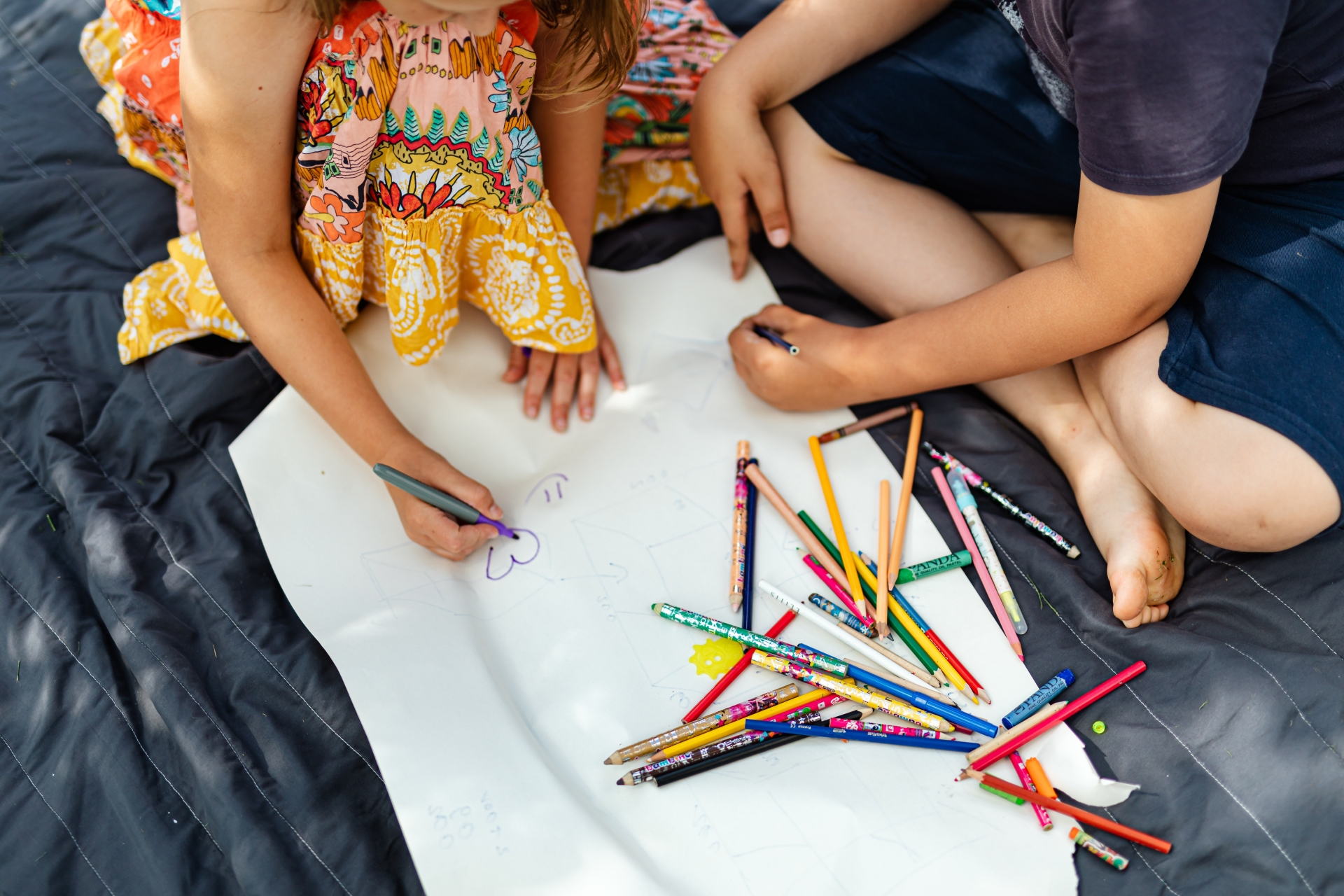While many new year resolutions are almost certain to be broken (that’s the hard truth!), others can be easily integrated into everyday life, and still have big impact. That’s certainly the case when it comes to fostering creative thinking — a habit that has untold benefits, and is a whole lot of fun, to boot. So, here are some tips for cultivating creativity — ideas that can be easily integrated into everyday life.
Imagine everyday
Here are some simple suggestions for flexing the imagination on a daily basis.
• Play games that involve acting, guessing and questioning — charades, I Spy, Who am I? What’s in the box?
• Read a short story or poem every day. Build this into bedtime routines, allowing time to talk about it afterwards. For example, you could discuss ideas for alternate outcomes of stories, and ask “what would you have done in the character’s shoes?”
• Use single sentences and images as prompts for oral story-telling. You only have to ask questions to see a story start to take shape — “Why? What happened next? Who did it?” and so on. You can take ideas from the poems or stories or books you’re reading e.g. use a book title to spark a new story, or pick a random sentence from a book or poem. For more ideas, read the rest of our Get Creative series — there are lots of story-starters and story-enders to trigger inspiration.
Create everyday
The “I made this!” satisfaction that comes from creating something — whatever that something is — is a unique joy. So, why not build the joyous act of creation into the everyday through making something on a regular basis?
This doesn’t have to be a big project requiring tonnes of material. It could be an everyday activity that’s useful and can be integrated into day-to-day needs, like these:
• Make mealtimes more fun and creative. Invite kids to create menus for family dinners, with imaginative names given to the dishes, and fun place setters.
• Cook up a batch of cookies or cakes and get creative with decoration.
• No time to bake? Add creativity to how simple snacks are presented. For example, kids can easily transform fruit into the likes of colourful dinosaur displays and circus scenes.
• Commission kids to make you (or themselves) bookmarks.
• Family birthday coming up? Suggest painting a picture or writing a poem as a personal gift. At a later stage, you could buy (or make) a frame and decorate it.
Whatever ideas you come up with, encourage kids to think about adding personality to their daily creations.
It’s also worth noting that elevating creative activities beyond doing things for the “because I asked you” sake of it adds to the sense of satisfaction – there’s a reason to make that bookmark because mum needs it/granny will love it, and so on. So, try to give creative activities a sense of purpose.
Alongside these daily activities, you could set a longer-term creative project in motion. Projects with purpose to enjoy together throughout the year, like these:
• Keep a journal that records family life on a weekly basis and take it in turns to complete the entries. These could be a mix of writing, drawing, collage and photos. To make this simpler, you could fill out a notebook with headings in advance – “My favourite thing about this week was…”; “This week I was most proud of…”
• Plant seeds for flowers, herbs or veg to be tended through the spring and keep a written and visual record of how they’re growing.
• Related, if your kids are into nature, you could create a year-long nature journal that documents plant and animal life in your garden, the local park, or things observed on walks.
• If you and your kids love cooking and baking, start a family cookbook that records your favourite recipes and documents your best bakes and favourite plates.
• Planning a family holiday? Start a travel journal ahead of your trip. This could include entries on what different family members are looking forward to doing and seeing during the trip. It could include research about the place, with maps and routes you might take. Post-trip, photos could be added, along with accounts of favourite experiences – my favourite funny moments, our most surprising experiences, things I did for the first time, moments I’ll remember forever.
For more creative inspiration and activities, check out the rest of our Get Creative series.
.jpg)
Joanne Owen is a writer and publishing professional with over twenty years’ experience of the book industry, and the author of a how-to children’s guide to creative writing, You Can Write Awesome Stories.
Alongside writing and reviewing books, she hosts writing workshops and is an Editorial Expert for LoveReading and LoveReading4Kids.



Comments (0)
Leave A Reply
You must be logged in to post a comment.